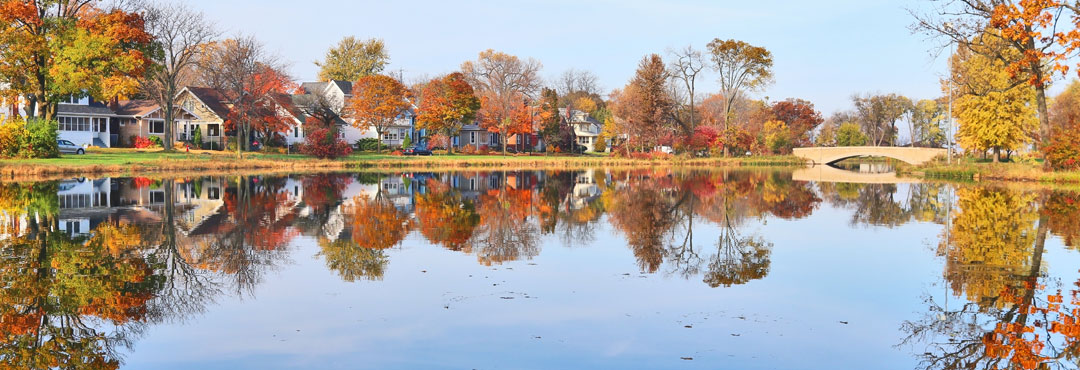Stormwater Ponds For Chicago, IL & Surrounding Areas
Most of the communities where we live contain roads, sidewalks, roofs, and other hard surfaces that do not soak up water. When rain falls or snow melts on these impervious surfaces, this water, called stormwater runoff, needs a place to go.
Stormwater ponds are constructed ponds designed to capture stormwater runoff. They serve to reduce the volume and rate at which stormwater rushes into our storm sewers, streams, and rivers during a storm and help prevent localized flooding and downstream impacts. They also keep pollutants and sediment out of our local rivers by allowing them to settle to the bottom of the pond. Stormwater ponds can serve as an attractive amenity if properly maintained.
How Do Stormwater Ponds Work?
Stormwater ponds provide the capacity to store stormwater. The water is then slowly released, usually through an outlet structure that leads to a nearby creek or storm sewer. If the stormwater pond has no outlet structure, the excess water infiltrates into the ground or evaporates.
Large storm events contribute to large volumes of runoff moving at an increased rate, which raises the potential for erosion and flooding downstream. Stormwater runoff also contains pollutants that it picks up from impervious surfaces, such as sediment, oil, salt, and nutrients associated with fertilizer and organic plant material like grass and leaves. One of the most important practices to reduce these negative impacts is to retain stormwater runoff in a constructed basin or pond. Water is held in the pond, allowing sediment to settle out and slowly releasing the water over days instead of hours, which relieves flooding downstream.

Managing Stormwater Ponds
Stormwater ponds are typically constructed by developers as part of a new development or redevelopment project. Once the project is complete, ownership of the pond most often transfers to the individual property owner, a homeowner’s association or to a local government unit.
If the developer did not install a native buffer, a five to the ten-foot zone of native plants around the pond is recommended. Native plants have deep roots that serve to hold the shoreline in place and therefore help prevent erosion. Native plants also help filter out pollutants from runoff before it reaches the water. They have the added benefit of providing food for wildlife while deterring geese that prefer to gather among low-profile vegetation, like turf grass.

Stormwater pond buffer
Routine maintenance of stormwater ponds is essential and typically includes:
- Removing organic material and debris from the pond inlets and outlets.
- Replacing or resetting culverts that become broken or moved out of alignment.
- Maintaining native buffer to prevent non-native plants from taking over the area.
- Occasional overseeding or supplemental planting of the buffer zone.
- Repairing undercut, eroded, bare soil areas, and gullies in the bank.
Long-term maintenance of stormwater ponds includes:
- Removing sediment approximately every 25 years or once the basin is 30% full of sediment.
Contact ILM for help with your Stormwater Pond
Contact ILM today to schedule a consultation on our stormwater pond services. We can also provide holistic strategies to care for your environment. We are happy to help you improve the beauty and health of your lake, pond, wetland, woodland, or prairie.

